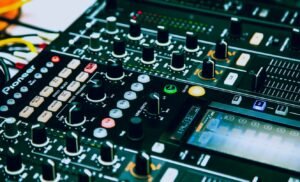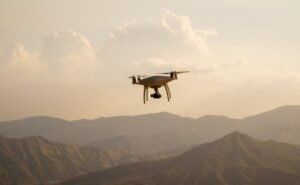Neural Networks Can Be Used for Which of the Following?
Neural networks are a type of artificial intelligence technology inspired by the workings of the human brain. They consist of interconnected nodes or artificial neurons that process and transmit information. Neural networks have gained popularity due to their ability to solve complex problems and perform tasks that were once difficult for traditional algorithms. Let’s explore the various applications of neural networks.
Key Takeaways:
- Neural networks have numerous applications in various fields.
- They can be used for pattern recognition, classification, and prediction.
- Neural networks excel in tasks involving big data and complex relationships.
- They are capable of image and speech recognition, natural language processing, and recommendation systems.
- Neural networks are also applied in fields such as finance, healthcare, and gaming.
Applications of Neural Networks
Neural networks find applications in various fields due to their ability to learn from data and generalize patterns. One common application is in pattern recognition, where they can identify and classify patterns in large datasets. This is particularly useful in fields such as image and speech recognition, where neural networks have achieved impressive accuracy rates.
Another key area where neural networks excel is in classification tasks. By providing labeled data, neural networks can learn to categorize new instances into predefined classes. They are widely used in spam filters, fraud detection systems, and sentiment analysis tools to make accurate predictions based on the given input data.
Furthermore, neural networks are powerful tools for prediction tasks. They can analyze historical data, identify underlying patterns, and make predictions about future events or outcomes. For example, in financial markets, neural networks are employed for stock price forecasting and predicting market trends, helping investors make informed decisions.
Table 1: Applications of Neural Networks
| Field | Example Applications |
|---|---|
| Image Processing | Facial recognition, object detection |
| Natural Language Processing | Language translation, sentiment analysis |
| Finance | Stock price prediction, fraud detection |
| Healthcare | Disease diagnosis, medical image analysis |
| Gaming | Game AI, player behavior prediction |
In addition to the examples mentioned above, neural networks are also utilized in fields such as finance, healthcare, and gaming. In finance, they can aid in credit scoring, risk assessment, and portfolio optimization. Similarly, in healthcare, neural networks contribute to disease diagnosis, drug discovery, and medical image analysis, ultimately improving patient outcomes.
*Neural networks are pushing the boundaries of technology by enabling machines to understand natural language. Through natural language processing, they can analyze and interpret human language, enabling applications like language translation, sentiment analysis, chatbots, and virtual assistants.
Table 2: Neural Network Architectures
| Architecture | Applications |
|---|---|
| Convolutional Neural Network (CNN) | Image recognition, self-driving cars |
| Recurrent Neural Network (RNN) | Speech recognition, language modeling |
| Generative Adversarial Networks (GANs) | Image synthesis, creative applications |
Neural networks have a wide range of architectures suitable for different applications. One common architecture is the convolutional neural network (CNN), which is highly adept at image recognition, making it a vital component of self-driving cars, facial recognition systems, and object detection algorithms.
Another popular architecture is the recurrent neural network (RNN), known for its ability to process sequential data and handle time-dependent relationships. RNNs are crucial in speech recognition, language modeling, and generating text or music.
*One interesting fact is the generative adversarial networks (GANs) that consist of a generator and a discriminator network. GANs are used to generate new content, such as realistic images or music, through a training process that involves the generator learning to deceive the discriminator.
Table 3: Neural Network Advantages and Limitations
| Advantages | Limitations |
|---|---|
| Ability to learn from data | Need for large amounts of labeled data |
| Capability to handle complex relationships | Black box nature, lack of interpretability |
| Parallel processing for fast computations | Computational resource requirements |
| Generalization to unseen data | Potential for overfitting if not properly trained |
Neural networks offer several advantages for solving complex problems. Their ability to learn from data enables them to tackle tasks with intricate relationships and patterns. Moreover, neural networks are capable of parallel processing, which allows for fast computations, making them ideal for big data and real-time applications.
*However, neural networks also have limitations. They require a significant amount of labeled data for effective training, and their black box nature can make it challenging to interpret and explain their decision-making process. Additionally, neural networks demand substantial computational resources, and if not adequately trained, they can exhibit overfitting, where they perform well on training data but poorly on unseen data.
Neural networks have revolutionized various industries by providing solutions to complex problems. Their applications continue to expand, pushing the bounds of artificial intelligence and contributing to advancements in technology. From pattern recognition and classification to prediction and decision-making, neural networks are a powerful tool in the realm of machine learning.

Common Misconceptions
Neural Networks Can Be Used for Which of the Following?
There are several common misconceptions surrounding the capabilities of neural networks. While they are powerful tools in machine learning, they are often misunderstood in terms of their potential applications.
- Neural networks are only useful for deep learning tasks.
- Neural networks can solve any problem with high accuracy.
- Neural networks can replace human decision-making entirely.
Firstly, one common misconception is that neural networks are only useful for deep learning tasks. While it is true that neural networks excel in deep learning tasks, such as image recognition and natural language processing, they are not limited to these areas. Neural networks can also be used for simpler tasks, such as regression or classification, where a deep learning architecture may not be necessary.
- Neural networks can be used for simple regression problems.
- Neural networks can be used for classification tasks.
- Neural networks can be used for pattern recognition.
Secondly, another misconception is that neural networks can solve any problem with high accuracy. While neural networks are indeed powerful, they are not a silver bullet solution for every problem. A neural network’s performance heavily depends on the quality and quantity of training data, the network architecture, and the problem itself. Some problems may be better suited for other algorithms or may require additional preprocessing steps to be solved effectively.
- Neural networks’ performance relies on the quality and quantity for training data.
- Neural networks require a well-designed network architecture to achieve high accuracy.
- Some problems may be better suited for other machine learning algorithms.
Lastly, there is a misconception that neural networks can replace human decision-making entirely. While neural networks can automate certain decision-making processes, they are still tools that require human guidance and supervision. Human interpretation and understanding are vital in interpreting and acting upon the results produced by neural networks. The decisions made by neural networks should be used as support or suggestions rather than absolute solutions.
- Neural networks can automate decision-making processes.
- Human guidance and interpretation are necessary for using neural network results effectively.
- Neural network decisions should be treated as support or suggestions rather than absolute solutions.

Introduction:
Neural networks are a type of artificial intelligence technology that have revolutionized various industries. Their ability to learn and adapt makes them a powerful tool for solving complex problems. In this article, we will explore ten fascinating applications of neural networks.
1. Predicting Stock Market Trends:
Neural networks can analyze historical stock market data and make predictions about future trends. By identifying patterns and correlations, these networks help investors make informed decisions.
2. Detecting Fraudulent Transactions:
Financial institutions often use neural networks to flag suspicious transactions and prevent fraud. These networks can identify unusual patterns of behavior and alert authorities in real-time.
3. Enhancing Medical Diagnoses:
Neural networks have been successfully employed in the field of medicine for diagnosing diseases and analyzing medical images. By analyzing vast amounts of data, these networks can detect patterns and aid doctors in accurate diagnoses.
4. Autonomous Driving:
Neural networks are at the core of self-driving cars. They process real-time data from sensors, cameras, and radar to make decisions, allowing vehicles to navigate safely without human intervention.
5. Natural Language Processing:
Neural networks enable machines to understand and process human language. From virtual assistants to language translation apps, these networks enhance communication between humans and machines.
6. Image Recognition for Security:
Neural networks are widely used in surveillance systems for identifying and tracking objects and people. They can accurately recognize faces, license plates, and suspicious activities, enhancing security measures.
7. Improving Customer Recommendations:
Companies like Netflix and Amazon utilize neural networks for recommending personalized content to customers. These networks analyze user behavior and preferences to suggest relevant movies, books, or products.
8. Voice Recognition and Speech Synthesis:
Neural networks are behind voice recognition systems like Siri and Google Assistant. They enable computers to understand and respond to spoken commands, making interactions more natural and intuitive.
9. Gaming and Player Behavior Modeling:
Neural networks play a significant role in video game development. They can simulate complex behaviors, learn from player actions, and create challenging AI opponents for an immersive gaming experience.
10. Analyzing Social Media Sentiment:
Neural networks can process a vast amount of social media data to gauge public sentiment and trends. This information is valuable for businesses and organizations in understanding customer perceptions and preferences.
Conclusion:
Neural networks have emerged as a powerful tool with diverse applications, revolutionizing industries ranging from finance to healthcare. With their ability to analyze complex data and make predictions, these networks continue to push the boundaries of artificial intelligence, enhancing our lives in countless ways.
Frequently Asked Questions
What are neural networks?
A neural network is a computational model inspired by the functioning of the human brain. It is composed of interconnected artificial neurons that collaborate to process information and perform complex tasks.
How are neural networks used in image recognition?
Neural networks are commonly employed in image recognition tasks to classify and identify objects within images. With the help of convolutional neural networks, these models can learn to recognize patterns and features in images, improving accuracy over time.
Can neural networks be used for natural language processing?
Yes, neural networks are widely used in natural language processing (NLP) tasks. Recurrent neural networks and transformer models, such as the popular BERT, are utilized for tasks like language translation, sentiment analysis, text generation, and more.
In which industries are neural networks widely used?
Neural networks find applications in a wide range of industries, including but not limited to healthcare, finance, marketing, automotive, robotics, and computer vision. They are used for tasks such as disease diagnosis, stock market prediction, customer segmentation, self-driving cars, and object recognition.
Are neural networks used in voice and speech recognition?
Yes, neural networks play a significant role in voice and speech recognition systems. Speech recognition algorithms, such as those used in virtual assistants like Siri or Alexa, employ deep learning techniques like recurrent neural networks (RNNs) or convolutional neural networks (CNNs) to convert spoken words into written text.
Can neural networks be used for anomaly detection?
Absolutely, neural networks are widely used for anomaly detection. By training on normal patterns and behaviors, neural networks can detect anomalies or outliers, making them useful for fraud detection, intrusion detection systems, and other anomaly detection applications.
How are neural networks utilized in recommendation systems?
Neural networks play a vital role in recommendation systems by analyzing user behavior and preferences to provide personalized recommendations. Collaborative filtering, content-based filtering, and hybrid recommendation systems often utilize neural networks to achieve this.
Can neural networks be used for time series forecasting?
Yes, neural networks are commonly used for time series forecasting. Recurrent neural networks (RNNs) and Long Short-Term Memory (LSTM) networks have been effective in predicting future values based on historical data, making them valuable in various fields such as finance, weather forecasting, and sales forecasting.
Are neural networks suitable for data clustering?
Neural networks can be used for data clustering tasks. Unsupervised learning algorithms, such as self-organizing maps (SOM) or autoencoders, can be trained to group similar data points together, aiding in data exploration and pattern recognition.
How do neural networks contribute to medical diagnosis?
Neural networks play a crucial role in medical diagnosis. By analyzing patient data, medical images, or genetic information, neural networks can provide insights for disease diagnosis, tumor detection, and prognosis prediction, contributing to improved healthcare outcomes.




